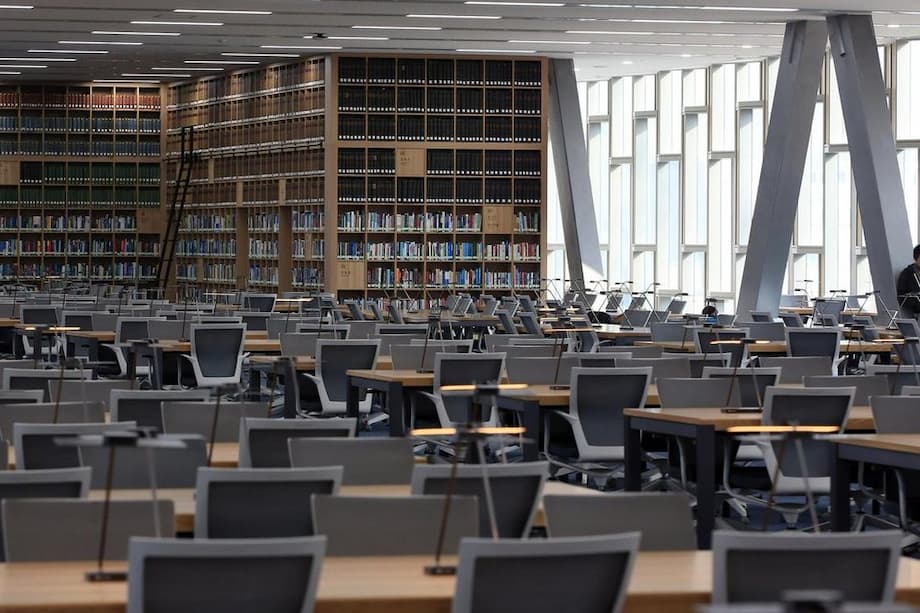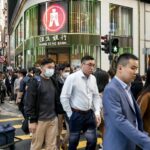A wave of withdrawals as medicine draws top talent
South Korea’s most prestigious universities, known collectively as SKY, recorded their highest student withdrawals since official tracking began in 2007. In 2024, 2,481 students exited Seoul National University, Yonsei University, and Korea University, an increase of 355 from 2023. The surge has been widely linked to a rush toward medical school admissions following the first planned expansion of medical school quotas in 27 years. Test prep analysts and university data point to a clear pattern. Many students paused their degrees or left entirely to retake the College Scholastic Ability Test (CSAT) for a shot at a medical school seat, a route perceived to offer stable careers and high social standing.
- A wave of withdrawals as medicine draws top talent
- What changed in medical school admissions?
- Which majors are moving, and why?
- Inside South Korea’s exam retake culture
- Engineering and chipmaking feel the strain
- Early admissions churn adds to the picture
- How universities are coping
- Policy choices now on the table
- The Essentials
The exits were not evenly spread. Korea University saw 1,054 withdrawals, Yonsei University 942, and Seoul National University 485. By academic track, students in natural sciences accounted for 1,494 withdrawals, followed by 917 in the humanities and 70 in entertainment and sports. Compared with 2022, withdrawals by humanities students rose by 154, or 20.2 percent, while natural sciences rose by 173, or 13.1 percent. The pattern aligns with the fields most likely to pivot to medicine.
The official statistics count both students who formally left the university and those who did not return after a leave of absence. That distinction matters. In many cases, students remain on the registry while focusing on exam preparation. Universities outline separate rules for academic standing, warnings, and leave, and medicine and pharmacy often follow special regulations. In short, the term withdrawal in these figures covers different academic statuses, not only permanent separations.
Jongro Academy, a major college admissions consultancy, characterized the trend as a direct response to the medical school expansion. The firm’s assessment was widely cited by Korean media outlets covering the spike in exits from the SKY campuses.
Introducing its analysis, the academy noted how widespread the pivot to medicine has become among top-performing undergraduates.
Jongro Academy said, “It is estimated that a majority of the students took the college entrance exam to apply for medical schools.”
Government decisions in 2024 to grow medical school seats, then to partially scale back the size of that increase for the following year, did not blunt interest. Advisers expect many high scorers at elite universities to keep aiming for medical school while policies remain in flux.
How big is the shift compared with previous years?
The 2024 figure represents a 16.7 percent jump from 2023 and the highest level of withdrawals on record for the three top campuses. It is a visible break from recent years, and the composition of exits reinforces the medical school angle. Natural sciences, the track that most readily transitions to premedical prerequisites, accounted for the largest share. Humanities withdrawals, while smaller in absolute terms, also rose sharply compared with 2022, which signals that the medical pull extends beyond a single track.
What changed in medical school admissions?
For the first time in nearly three decades, the government advanced a plan to expand medical school intake. Policymakers cited aging demographics, shortages of physicians outside Seoul, and strains exposed by public health crises. Media reports and education analysts described the 2024 announcements as a key trigger behind the spike in withdrawals. Students weighing long study commitments against future job security recalculated the odds, then redirected their efforts to medical school admissions.
The expansion unfolded against a recent history of tense negotiations over physician supply. In 2020, the government proposed raising medical student numbers by 4,000 over 10 years, along with service obligations in under-served regions. Medical groups pushed back, arguing that distribution and working conditions were the core problems. Strikes and a test boycott by senior medical students followed. After months of disruption, the government paused the plan and arranged a special licensing exam to resolve the immediate crisis. That episode highlighted how politically sensitive medical education policy can be in South Korea, as well as the lasting stakes for health care capacity.
Which majors are moving, and why?
The numbers reflect a clear academic pattern. Natural sciences majors made up the single largest pool of undergraduates opting out in 2024. Many of these students have the calculus and science coursework that maps cleanly onto medical school prerequisites. Humanities students also moved in meaningful numbers, likely reflecting the strength of medicine’s appeal across disciplines and the willingness of some students to invest time in bridging coursework.
The pull factors are familiar. Medicine in South Korea offers comparatively stable employment, high earnings at the top, and considerable social prestige. Hospital work is demanding, and trainee working conditions have sparked recurring debates, yet the long run calculus, in many families’ view, still tilts toward medicine. For students already enrolled at elite universities, the perceived opportunity cost of one more year preparing for the CSAT looks acceptable if the payoff is a medical school seat.
In practice, students adopt different strategies. Some officially drop out. Others remain on leave while they prepare. The inclusion of both routes in the withdrawal statistics underscores how many are keeping their options open rather than making irreversible breaks with their current degree programs.
Inside South Korea’s exam retake culture
At the center of this shift is the CSAT, known locally as the Suneung. It is the national exam that shapes admissions outcomes for selective programs. Retaking the CSAT is common for students who aim for medicine. Many dedicate a full year to study as repeat takers, often outside the university setting, then apply through regular admissions. That cycle fits the pattern seen in the 2024 data, where hundreds of students registered as leaves or exits while they prepared again.
The repeat exam path is not just about one test. It reflects a market of private tutoring, intensive study academies, and a culture that places strong weight on admission to a limited set of fields. In this context, a planned rise in medical school seats functioned like a signal. It suggested slightly better odds for entry and a reward structure that justifies a detour from even the most competitive undergraduate programs.
Engineering and chipmaking feel the strain
The movement toward medicine is creating ripple effects across science and engineering. Administrators at Seoul National University’s College of Engineering have warned that a rising share of newly admitted students are surrendering seats. One recent account put withdrawals in the college at roughly 120 to 130 out of about 850 to 900 admitted students in a single year. Some engineering areas connected to health technology have seen nearly a quarter of students give up their places as they pivot to medicine. These shifts are coinciding with international competition for talent in artificial intelligence and semiconductors, fields where Korean firms have long excelled.
Industry voices fear a widening gap between demand for advanced skills and the supply of homegrown researchers and engineers. Reports describe steep drops in yield for semiconductor departments at select universities, with some programs experiencing withdrawal rates that outnumber the original cohort. Employers have flagged a potential shortage of chip engineers by the early 2030s if current enrollment patterns persist and if recruitment from overseas does not fill the gap. That concern is tied to a second trend, the outflow of highly trained graduates who accept higher pay packages at foreign firms.
Early admissions churn adds to the picture
Separate from the yearlong withdrawal statistics, early admissions data point in the same direction. At the SKY universities, thousands of students relinquished early admission offers for the 2025 intake, according to figures cited by Korean media. Seats left vacant after early rounds typically roll into regular admissions, which gives retakers another chance to enter later. At Seoul National University, hundreds of early admits reversed course, and the majority of those stepping away were in natural sciences. Students who gained admission to SNU’s medical school, however, overwhelmingly enrolled, which mirrors the larger shift in preferences toward medicine.
These early admissions movements align with the national policy context. Reports from late 2024 described a plan to add about 2,000 medical school slots starting in 2025, a decision that spurred a leap in medical applications. Subsequent adjustments reduced the scale of the increase, yet advising centers say the interest has remained elevated. The churn in early admissions helps show how quickly students react to perceived openings in competitive fields.
How universities are coping
Universities must balance student mobility with stable planning. Academic registrars administer rules on leaves of absence, grade warnings, and removal from the registry, and medicine and pharmacy often carry separate provisions. These administrative structures make it possible for students to step away temporarily without permanently severing ties, which explains why withdrawal figures include those who do not return after a leave. Faculties are also weighing how to maintain cohorts in foundational science and engineering courses when more high scorers are heading to medicine.
Some campuses are trying to sweeten the path in science and engineering. Forum proposals have included intensive scholarships for top students, expanded research opportunities, and new institutes dedicated to artificial intelligence. Seoul National University has launched programs intended to nurture standout engineering talent and to attract promising students, including research scholarships and enhanced mentoring. College leaders are lobbying for national policies that raise the professional rewards for science and engineering, reduce bureaucratic hurdles in research, and help prevent talent flight to overseas employers.
Policy choices now on the table
The government’s effort to grow the physician pipeline is aimed at real problems. Many rural and regional hospitals struggle to recruit, and an aging population requires more complex care. Medical organizations counter that working conditions and the distribution of doctors deserve equal weight, and they warn that adding seats without broader reforms could miss the mark. That debate has been running for years and flared during the 2020 dispute over proposed quota increases, when residents and medical students staged walkouts and senior students withdrew from the licensing exam. The dispute ended only after a policy pause and a special test to clear the backlog of candidates.
Policymakers now face a linked challenge. How to add physicians in locations that need them most, while also keeping a robust pipeline for engineering and science. Options under discussion include targeted scholarships with service commitments in under-served areas, higher pay for certain specialties and regions, and clearer career paths for community hospitals. On the technology side, advocates propose competitive research grants, elite training tracks for the top cohort of engineering students, and national institutes that match the compensation and facilities offered by global tech employers.
The 2024 withdrawal spike does not guarantee a permanent reshaping of the talent market. It does reveal how sensitive student choices are to admissions policy, wages, and prestige. Even small changes in medical school seat availability can sway thousands of high achievers. The next steps in policy, and the incentives built around both medicine and engineering, will determine whether this wave crests or becomes the new normal on Korean campuses.
The Essentials
- In 2024, 2,481 students withdrew from Seoul National University, Yonsei University, and Korea University, the highest total since records began in 2007.
- Analysts link the spike to South Korea’s first planned increase in medical school quotas in 27 years, which drew many students to retake the CSAT.
- Korea University recorded 1,054 withdrawals, Yonsei University 942, and Seoul National University 485.
- By track, natural sciences led with 1,494 exits, followed by 917 in humanities and 70 in entertainment and sports.
- Compared with 2022, humanities withdrawals rose by 20.2 percent and natural sciences by 13.1 percent.
- The government later scaled back part of the planned medical school expansion for the following year, yet interest in medicine has stayed high.
- Engineering faculties report rising seat surrenders as students pivot to medicine, raising concerns about future talent in AI and semiconductors.
- Early admissions churn for the 2025 intake shows the same trend, with more students abandoning early offers to pursue medicine through regular admissions.
- Universities are adjusting with leave policies and new incentives for science and engineering, while policymakers weigh measures to address both physician distribution and technology workforce needs.




